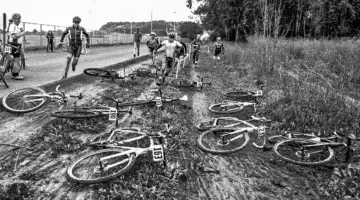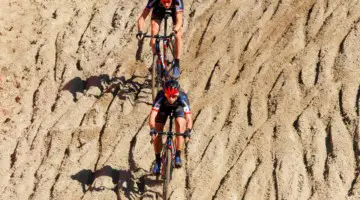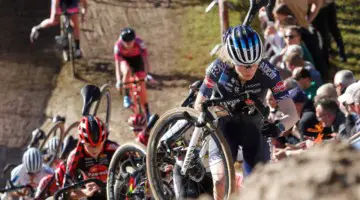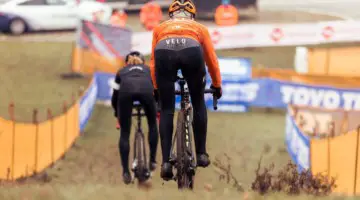It’s been an unusually wet start to the season. And now we’ve transitioned to what is typically the muddier part of the season. I suspect Louisville Nationals will be muddy as well.
What this means is that I’ve been getting a lot of texts along the lines of “I sucked and everyone else didn’t.” That’s probably not the case, but even if it is, let’s talk about some ways to handle muddy races.
I also get similar emails when courses have a lot of sand. There are some similar issues with both riding conditions. Mud tends to be a macrocosm while sand is a microcosm. We will discuss how to deal with both.
Get the Right Mindset
First, let’s talk about mindset: “I don’t do well in the mud.”
Well, not with that attitude you won’t.
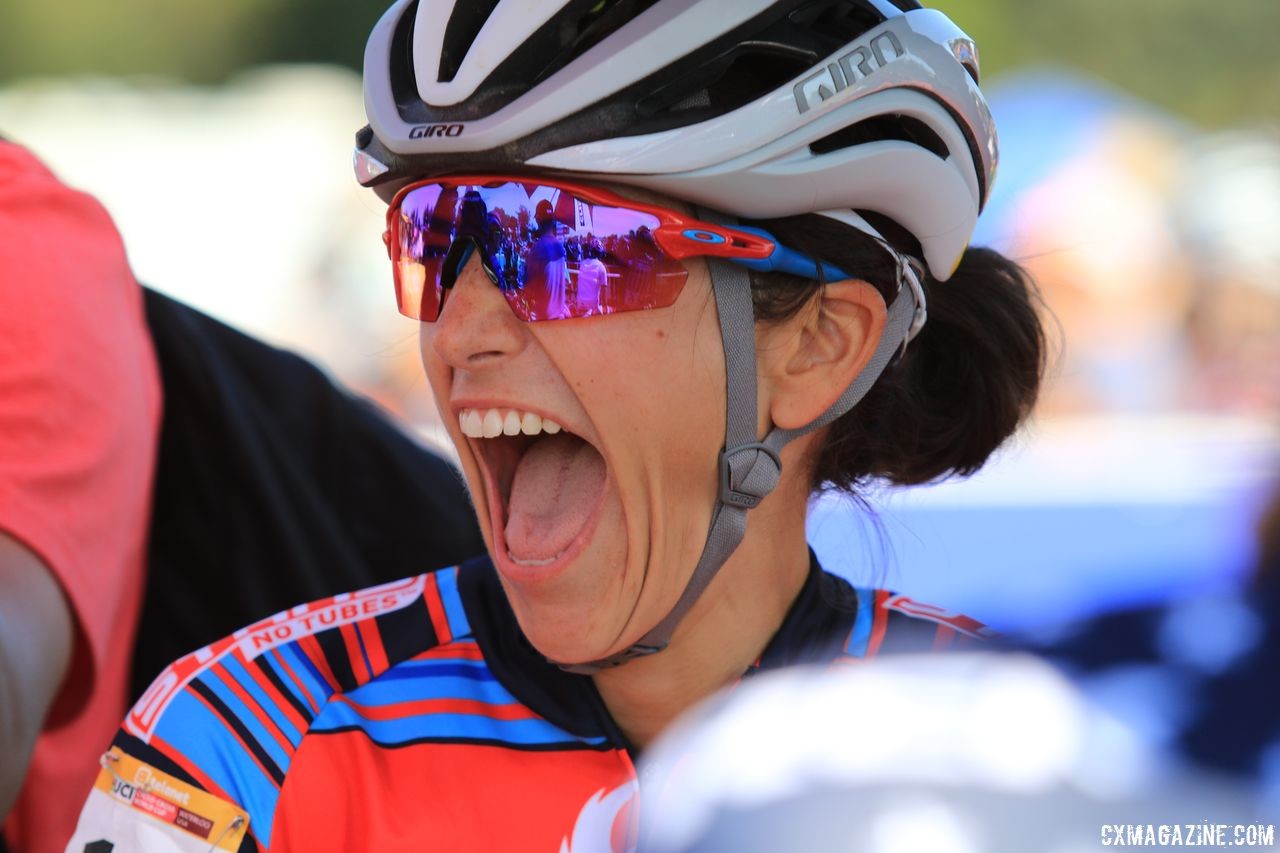
The attitude you bring to the start line is important. 2018 World Cup Waterloo. © D. Mable / Cyclocross Magazine
Even if you historically have not ridden well in the mud, that has no impact on how you handle course inspection or how you plan your race. You can still figure out a plan of attack for every corner and technical section (hint: it’s hard to fall off your bike if you’re running with it).
You can also control your mindset. There’s a lot of emerging evidence that self-talk (your inner dialogue) matters a lot. Don’t spend your time beating up on yourself.
“Confidence has nothing to do with the leaderboard or winning. Confidence comes from you knowing that you giving your best effort is enough.” – Ben Bergeron.
You can control the initial state of your equipment too, such as tire selection, pressure, and the cleanliness of your drivetrain and pedals coming into the race. You can’t control the mud, and everyone has to race in it. You can control bringing your best plan, attitude, and equipment to the situation.
Have a Short Memory
Second, have a very short memory.
People seem to spend a lot of time focusing on errors immediately after they make them. “I screwed up that corner, I’ll probably screw up the next one, have a bad race, and then I’m a bad person.” What an uncomfortable mindset to race with.
One way to deal with that is to make a note of the mistake you made in a given corner. Maybe you missed the rut or that section of the corner no longer has good traction or you found a root that got dug up over the course of the race. Formulate a plan for the next lap, such as running, moving right two feet or looking for grass on the outside next time. Then forget about what happened.
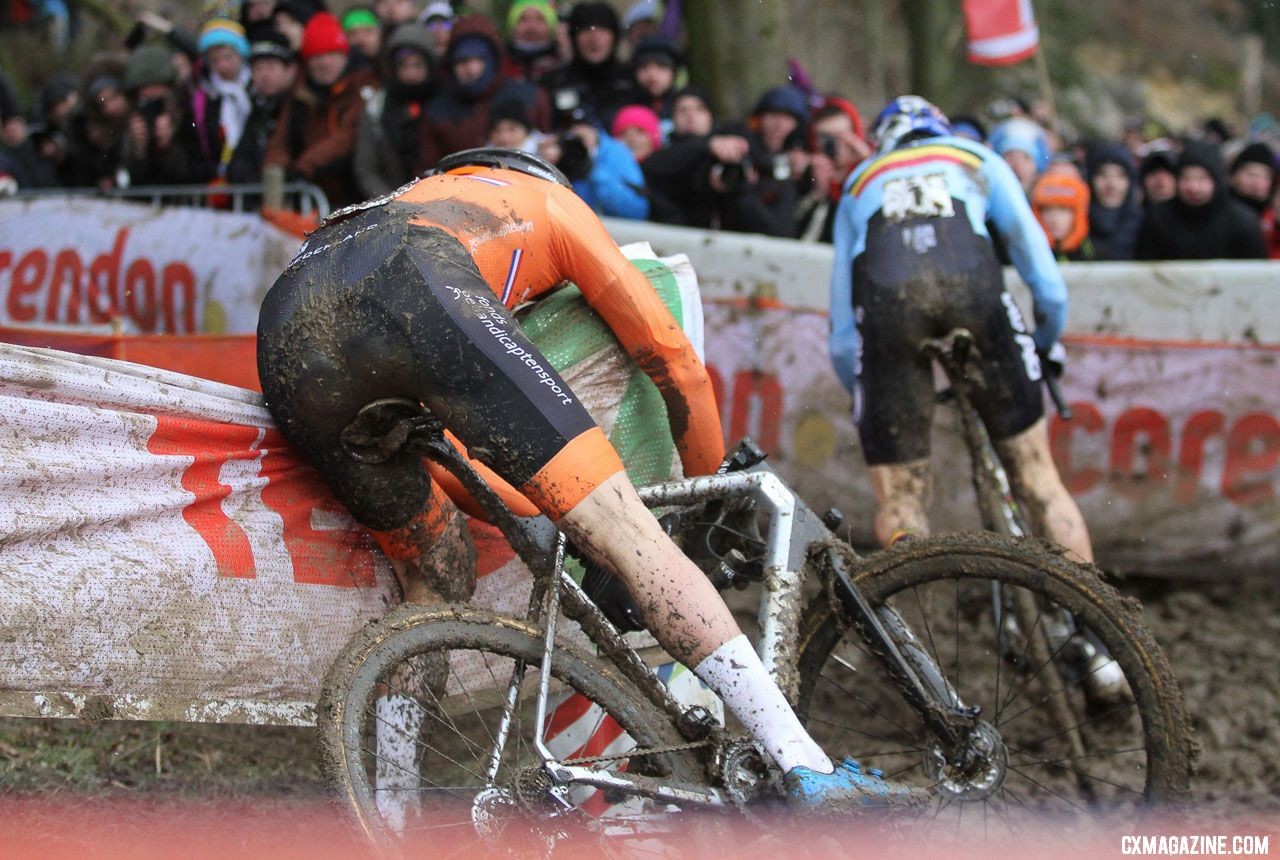
If you make a mistake in a corner, change your approach the next lap. Elite Men. 2018 UCI Cyclocross World Championships, Valkenburg-Limburg, The Netherlands. © Bart Hazen / Cyclocross Magazine
Anxiety is produced by worrying about the future and what might happen. Catastrophizing involves thinking about the worst possible outcome for a given scenario. Both of those are future focused. What are you doing right now? You’re not going to see that corner again for another eight minutes, focus on the next one coming up and what you can do best there. You can worry about that troublesome corner later, when it’s the present (again) but not now.
I’ve always found my ADHD to be an advantage here. Everything is always a surprise for me!
Master the Sand
Sand happens on a smaller scale. It’s focused in one area on a course that might otherwise not be that problematic. That said, sand is often a black-or-white situation in that you either ride it or you don’t and it’s very obvious when you don’t.
Like mud, a lot of it is mindset. Tell yourself you can and figure out what’s the best way you can. That said, unless you’re quite good, I would make running sand your default—and riding it a bonus. Running sand is a sure thing and allows you to move around other people when they make mistakes. Basically, it allows you to be the captain of your own ship.
If, in later laps, you get a clean run at the sand, feel free to ride it! Or try to ride it.
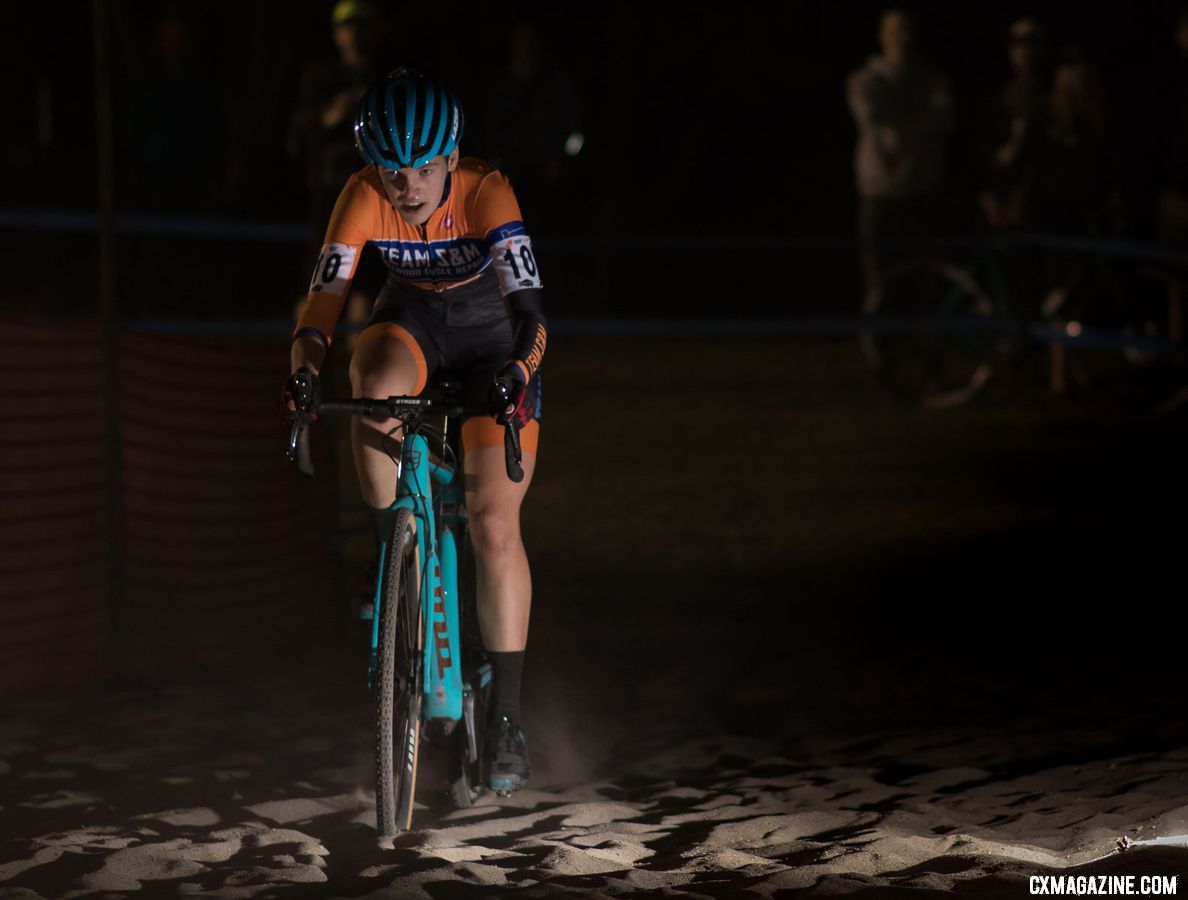
Clara Honsinger through the sand to finish fourth. 2018 Reno Cross women’s race. © A. Yee / Cyclocross Magazine
The two big issues I see there are not having a plan for when to get off. Many people ride until they run totally out of momentum, put a foot down and then dismount. This is nearly as slow as crashing.
Ride as far as you can but when you begin to stall, get off while you still have some momentum and start running. Don’t just run aground and then formulate a plan. Be proactive.
The other issue I see is people who get close to the end and put a foot down and try to remount or scooter the bike to get the last few feet. That plan almost never works and often ends up a lot worse than planned. Once your foot goes down, fully commit to getting off and running.
A key cyclocross skill is being able to transition smoothly between running and riding. Both are still racing cyclocross. Too many people are committed to riding their bike around the whole course, as opposed to thinking about which mode will be fastest at any given time.
In both situations, people tend to think (or report) that they were making a lot of errors while people around or in front of them were not. I think what is closer to the truth is that everyone is making mistakes on course. Your goal isn’t to ride a perfect race. That doesn’t exist, perfect is the enemy of good.
For instance, Stephen Hyde flatted and ripped a rear derailleur off at Hartford Nationals. That’s not a perfect race. But he still gave his best and did well.
How? He formulated another plan and rolled with it.

Stephen Hyde (Cannondale Cyclocrossworld) had to formulate a new plan in the last lap at Hartford Nationals. 2017 Cyclocross National Championships, Elite Men. © D. Mable/ Cyclocross Magazine
In a dry race maybe people make, say, five mistakes, on average. In a muddy race, it might be more like 50. You’re not the only one making them. The goal is to move past those mistakes.
Winning (be that the overall or against those around you) is often about making one less mistake than those around you. In a muddy race, if you can “just” make 49 mistakes, you’re going to come out ahead. This is especially true in the last two laps, where final placings are usually decided.
“Knock me down 9 times but I get up 10.” – Cardi B. (Thanks to Ellen Noble for that!)
There’s a lot you can’t control on a cyclocross course. But coming into a race, there is a lot that is under your control.
Focus on those parts you can control. Figure out a plan of attack for every section. Embrace the suck, as they say, and bring the same positivity to the conditions you don’t look forward to. There’s a lot you can do to bring your best race to any conditions.
For more skills and advice, see our Training Tuesday archives.
Featured image: Dave Mable























